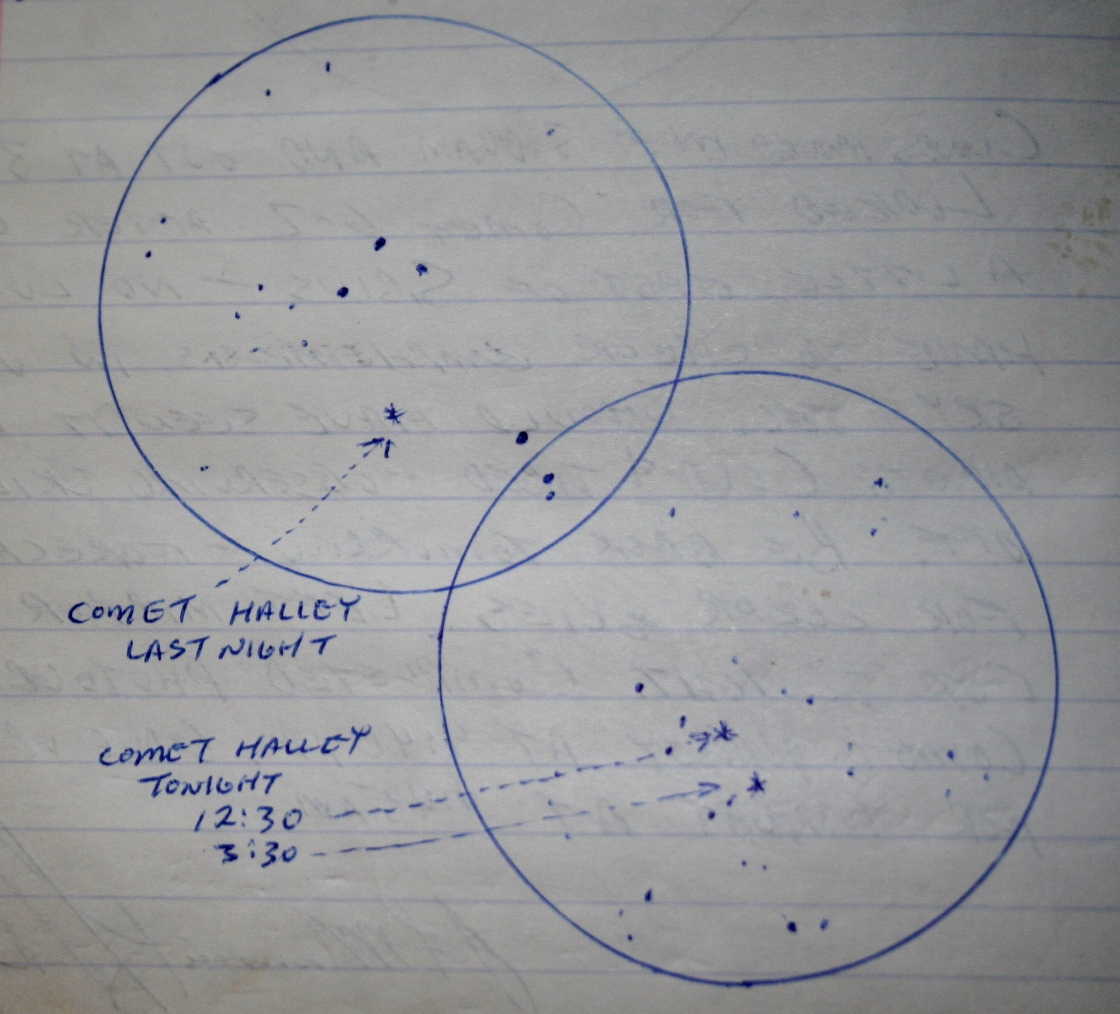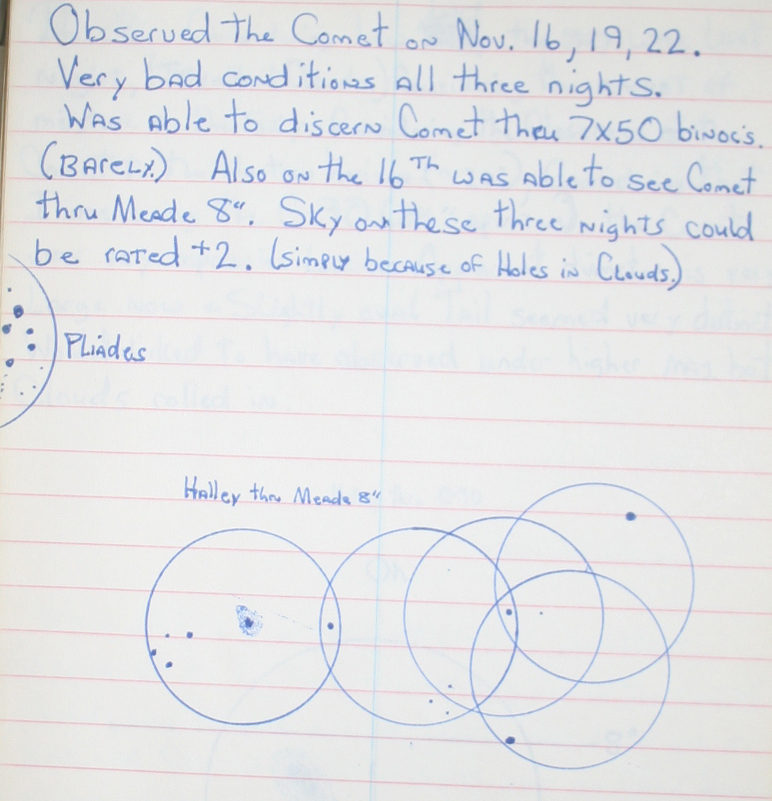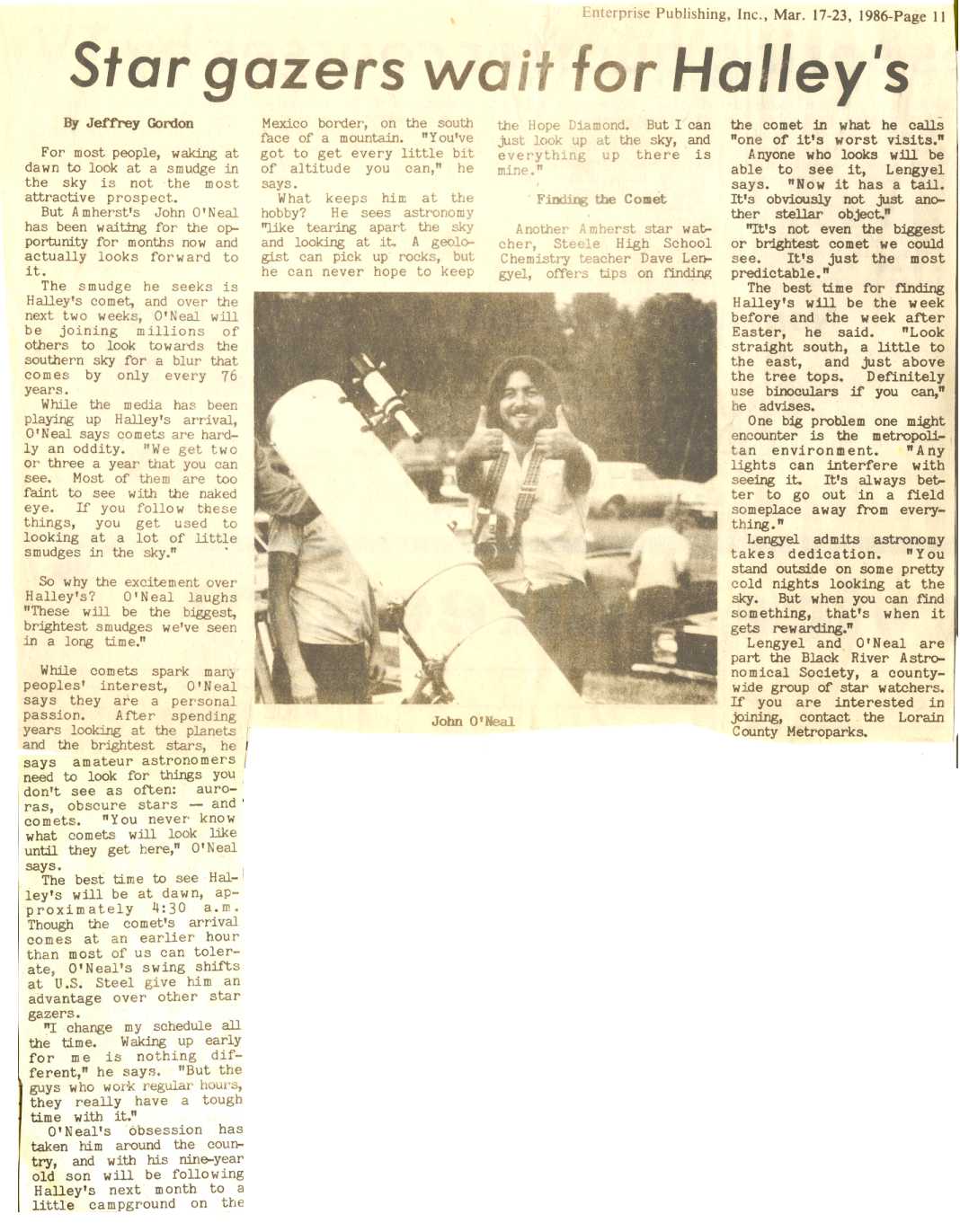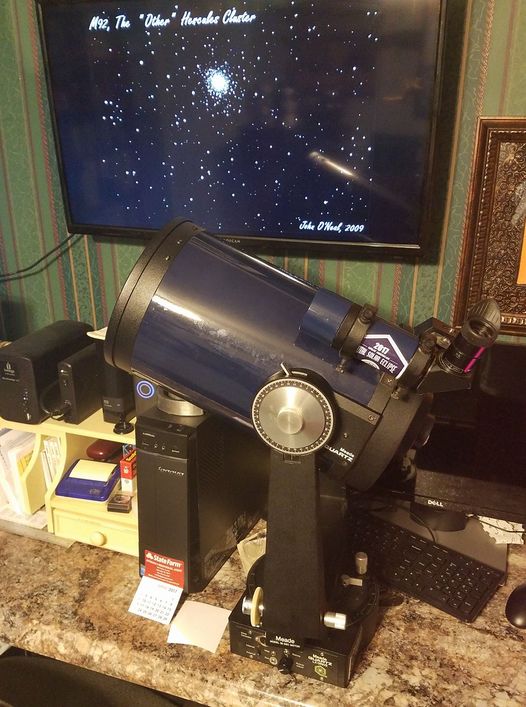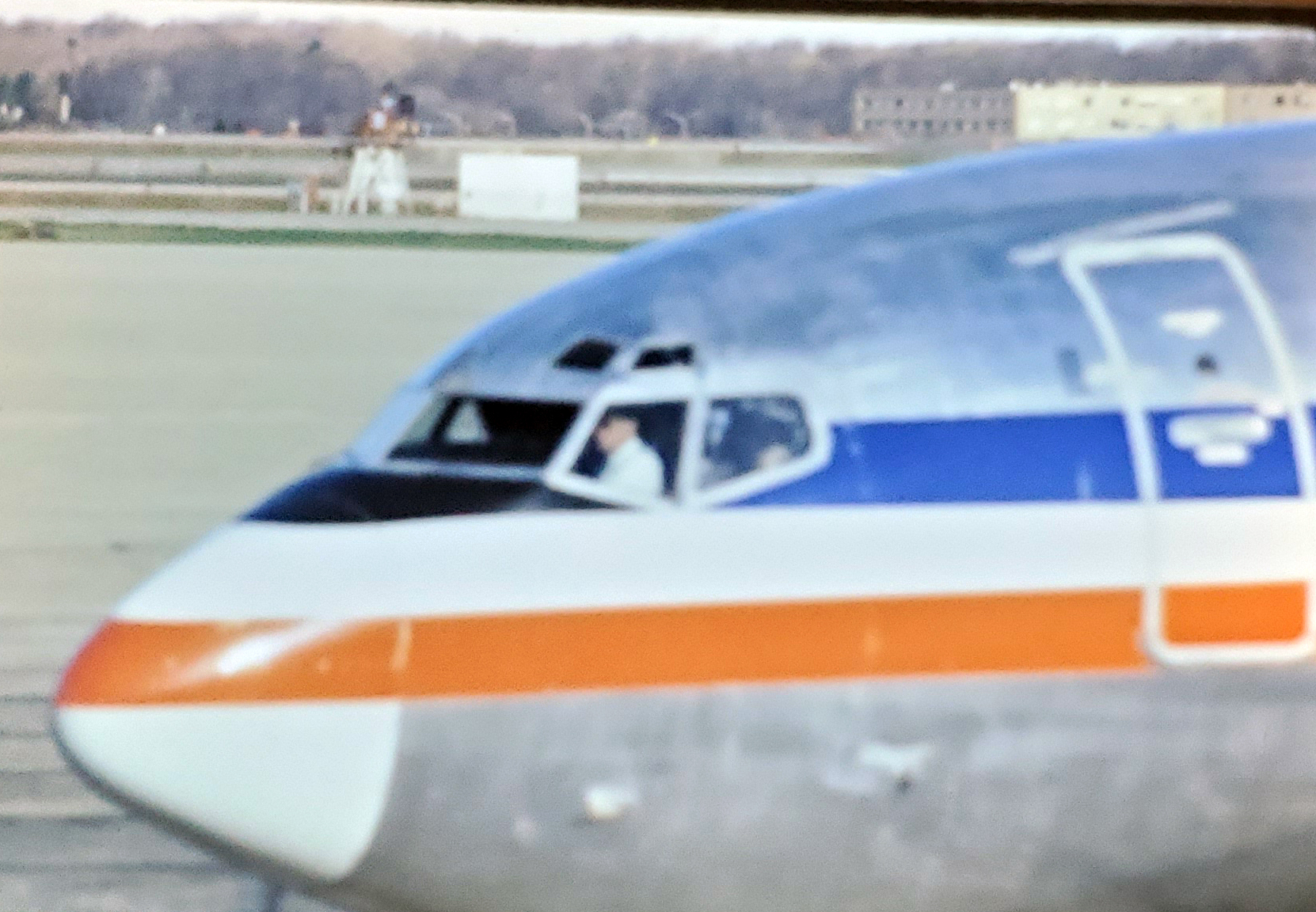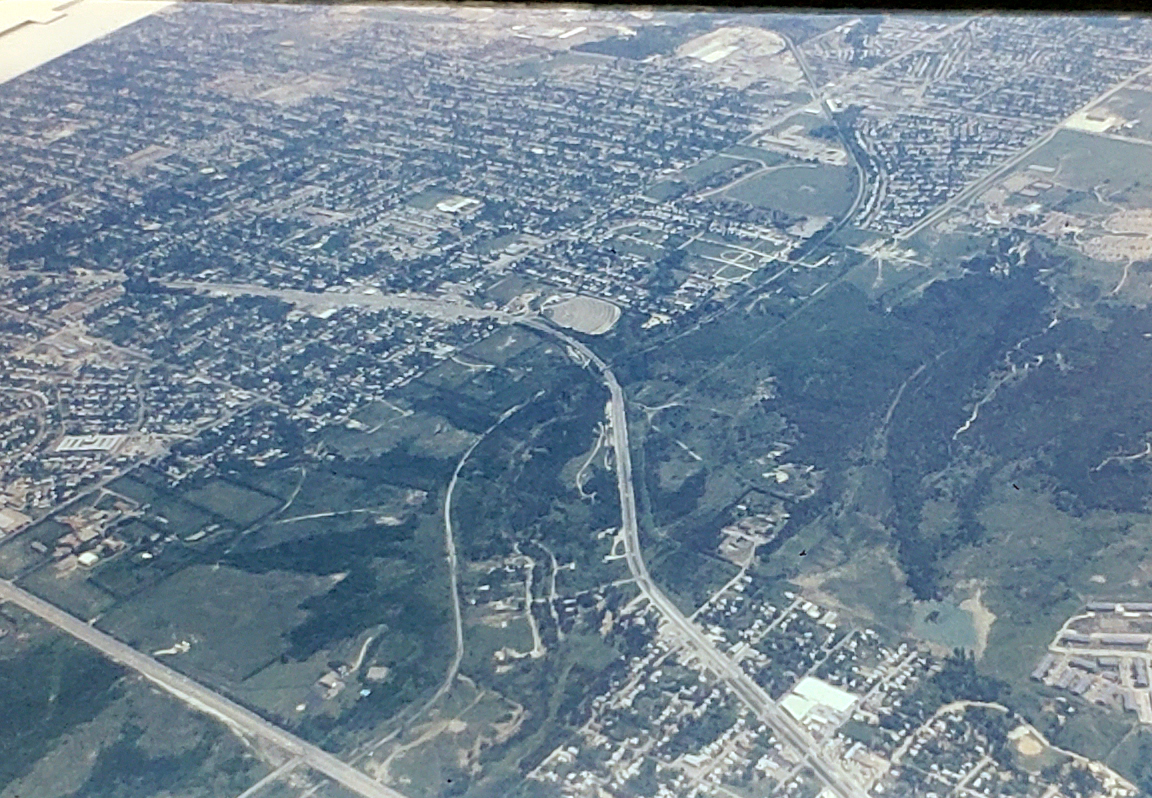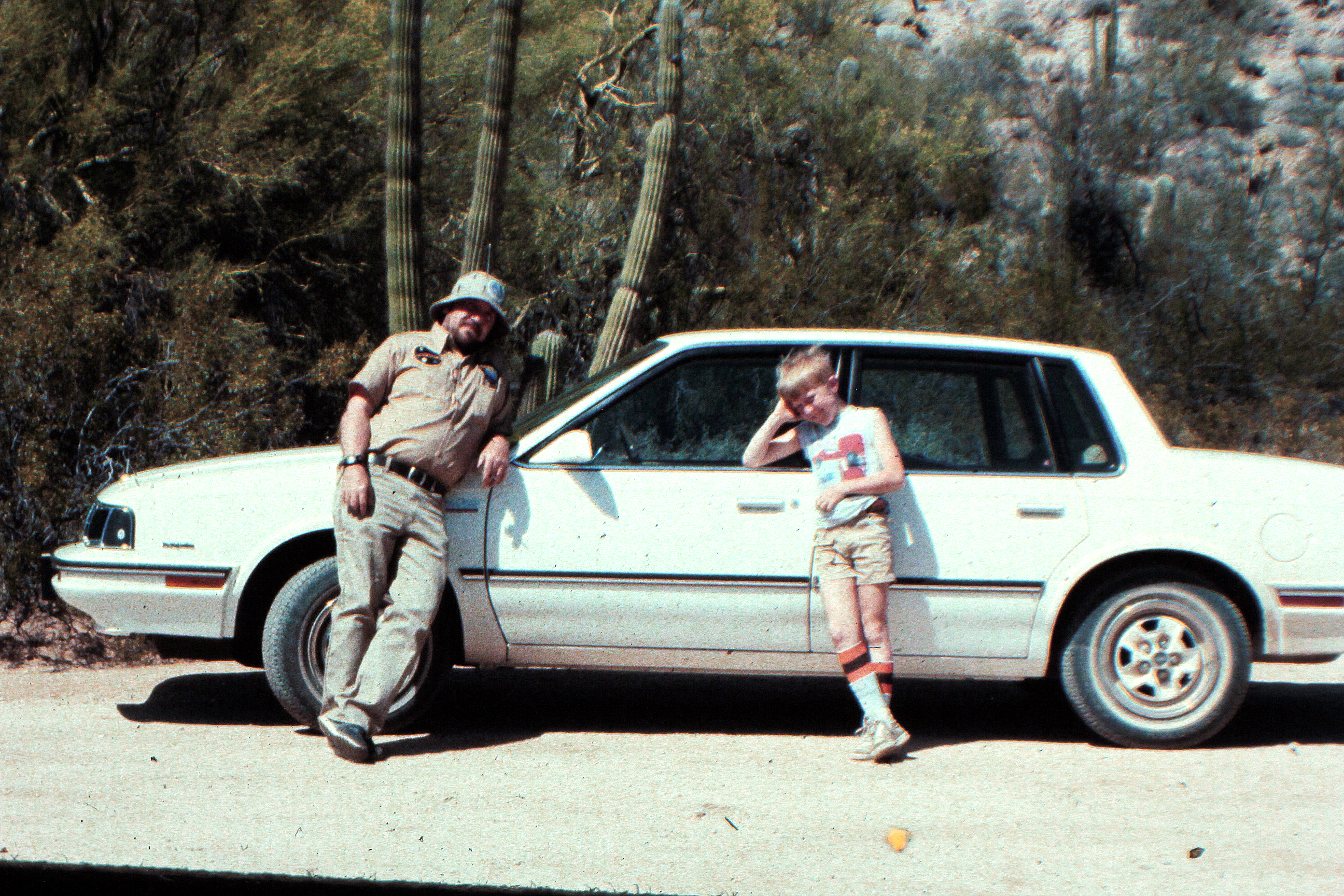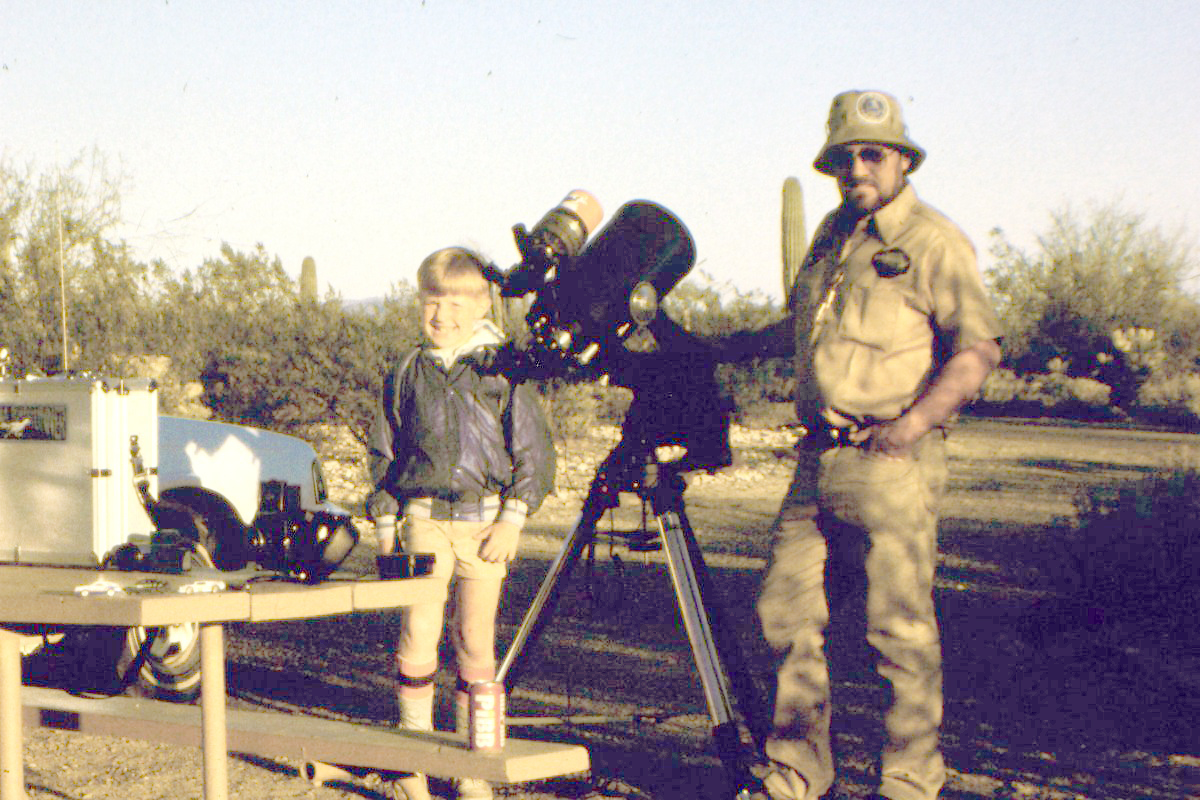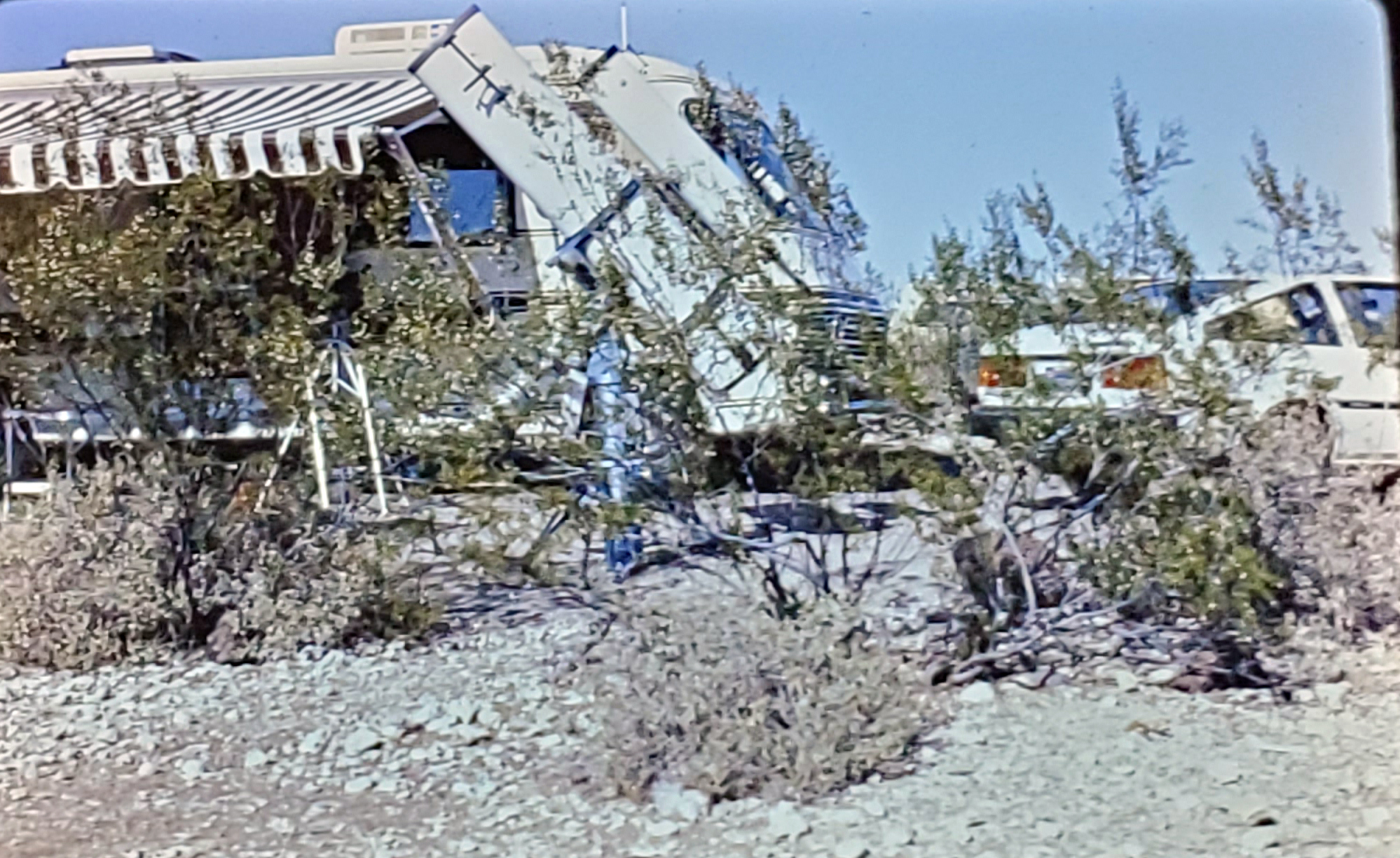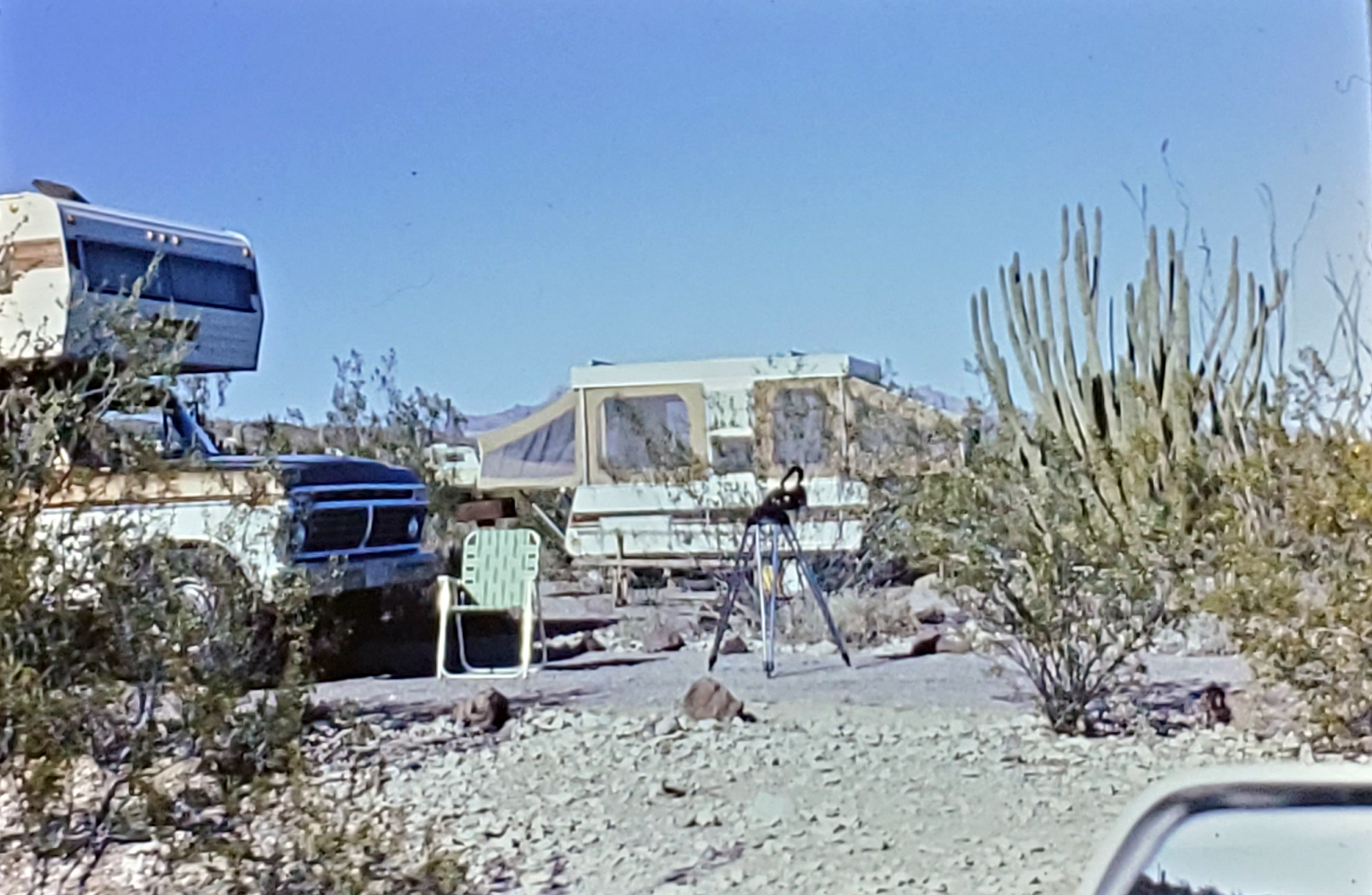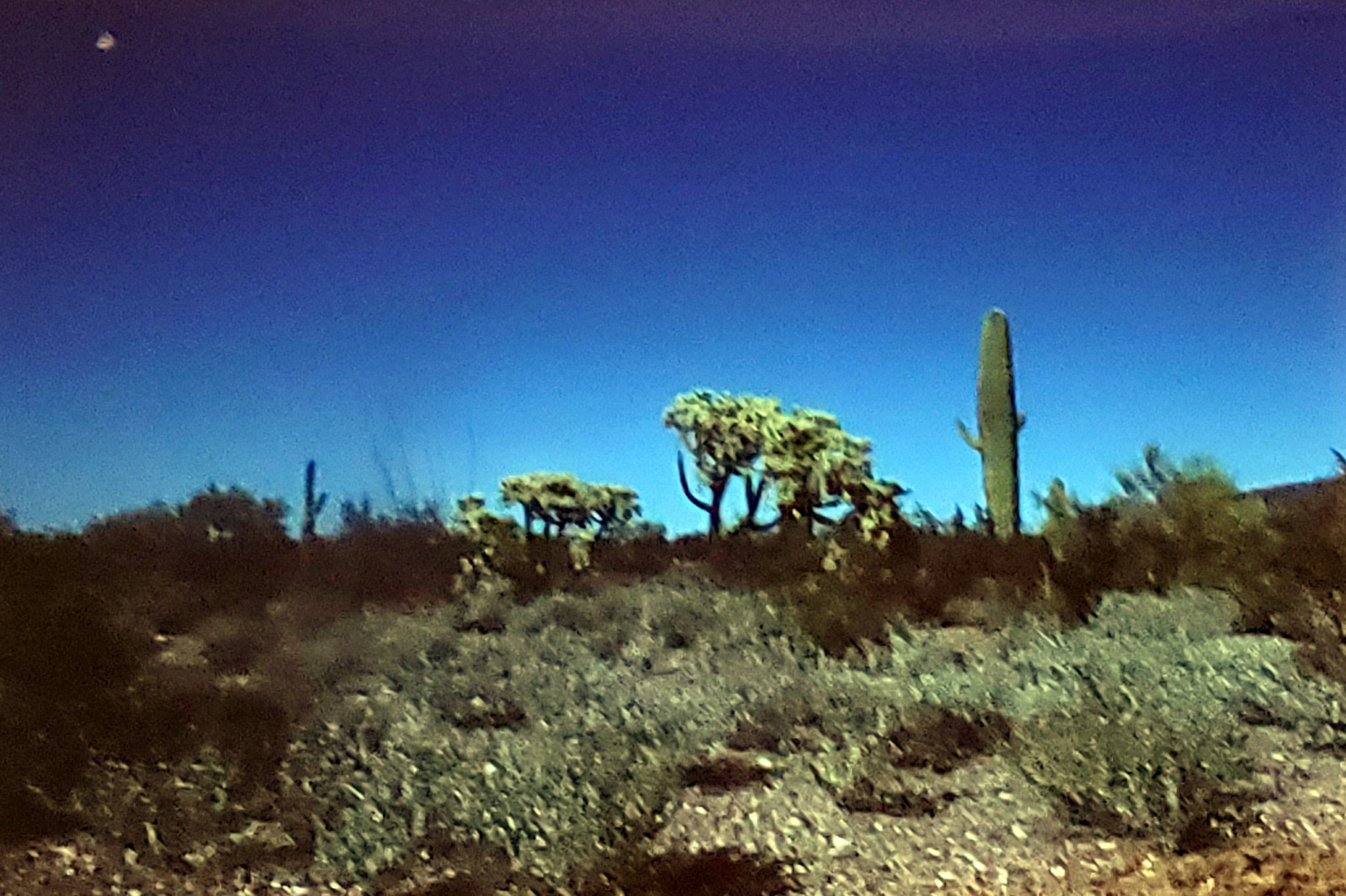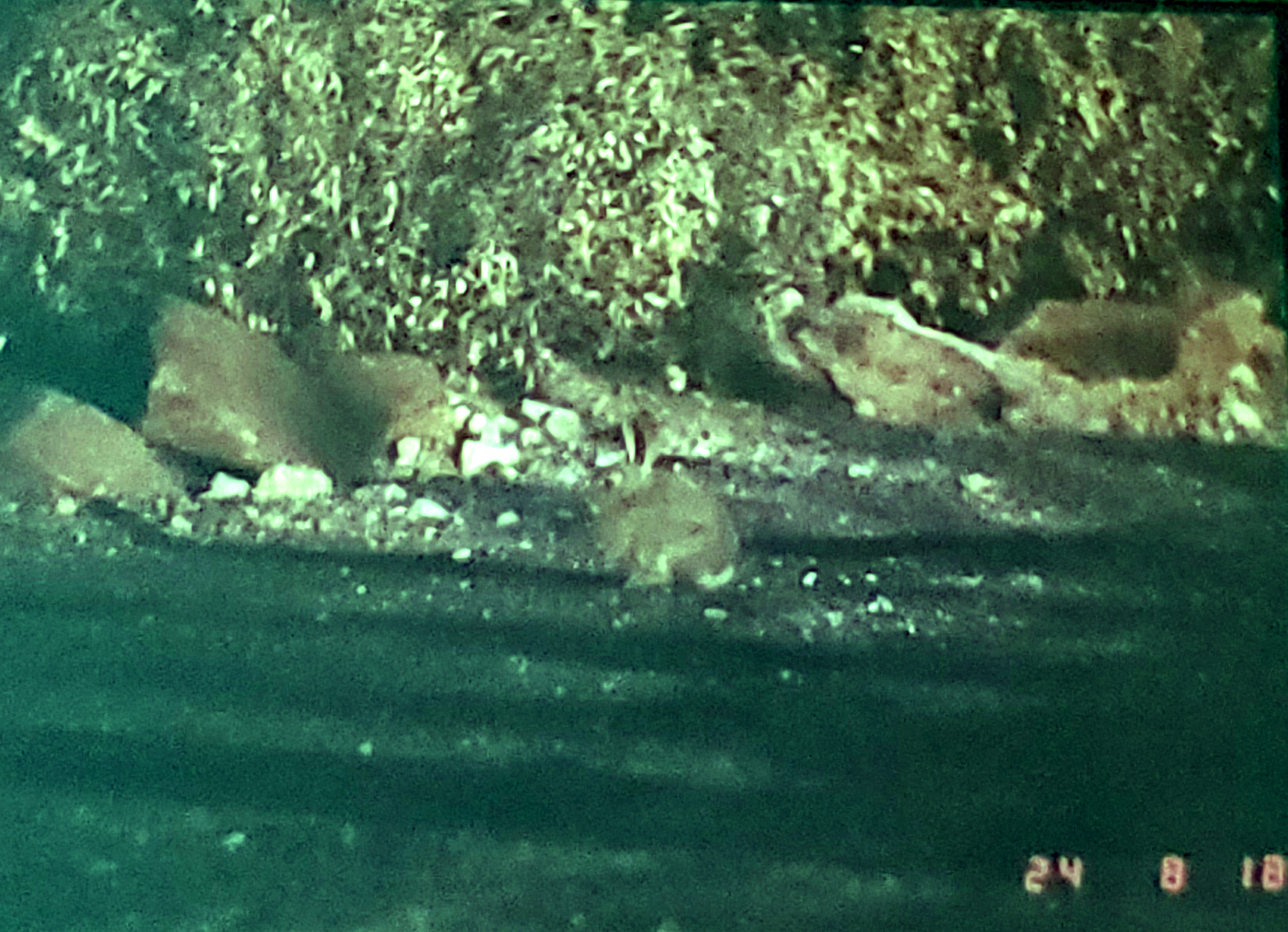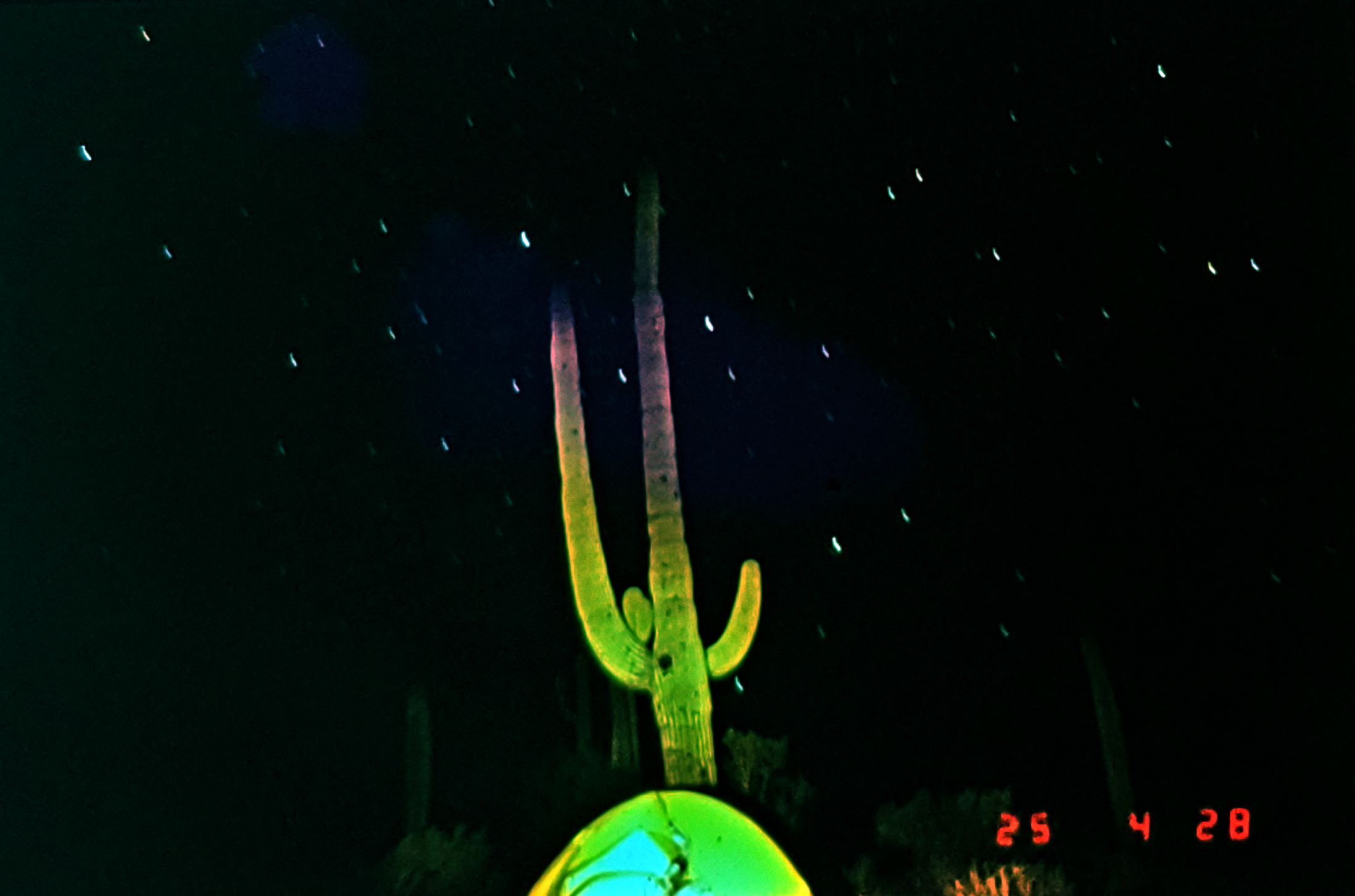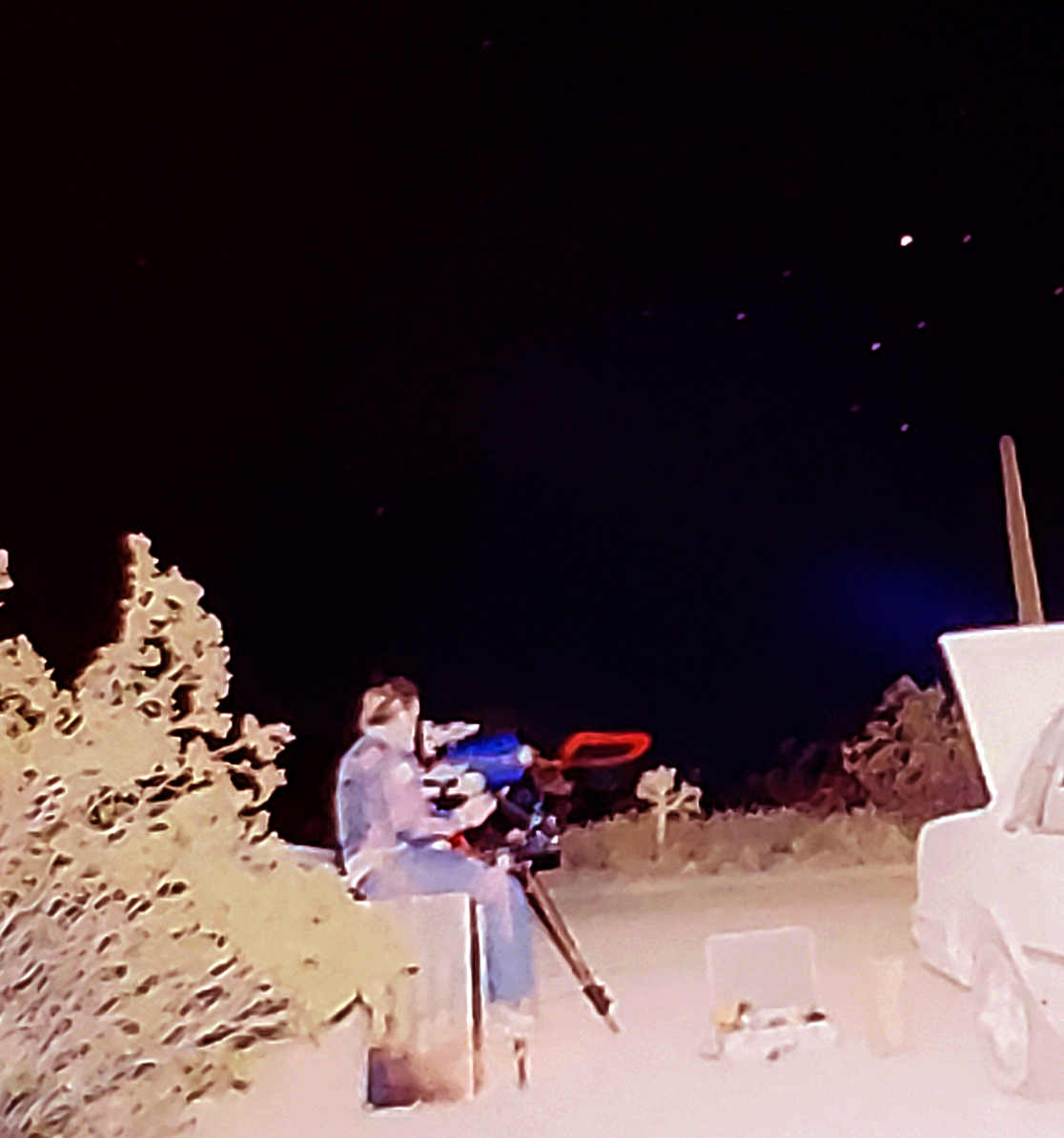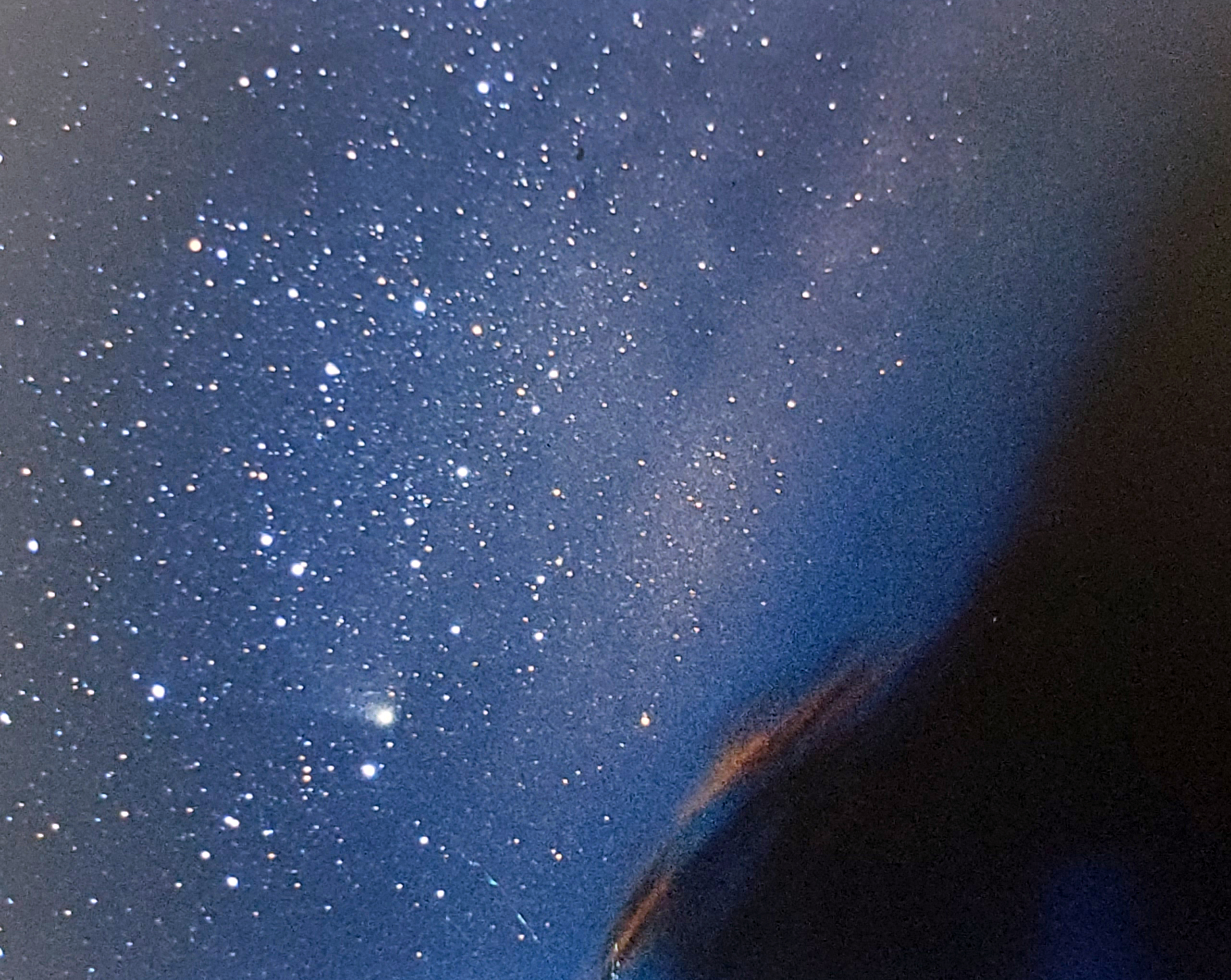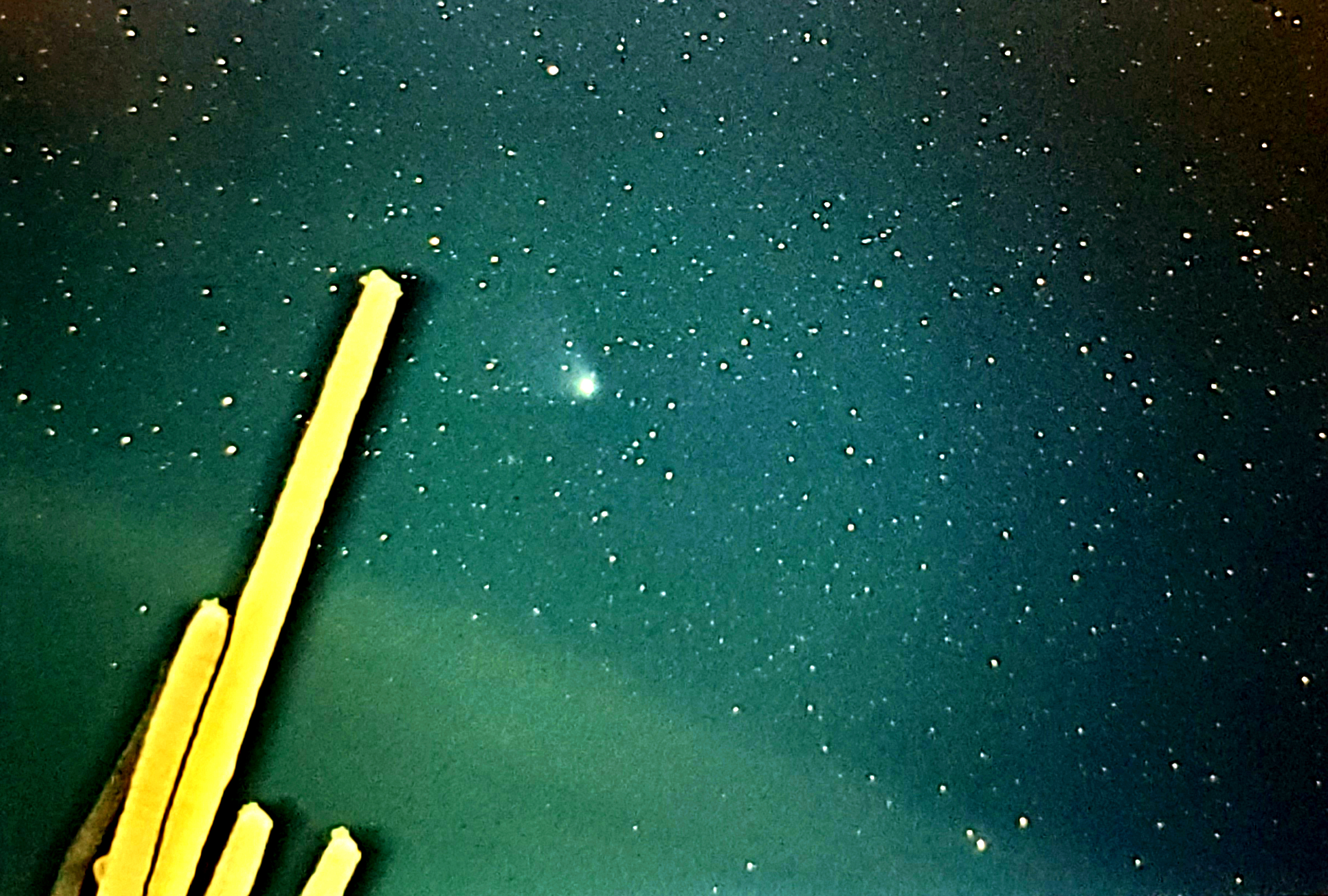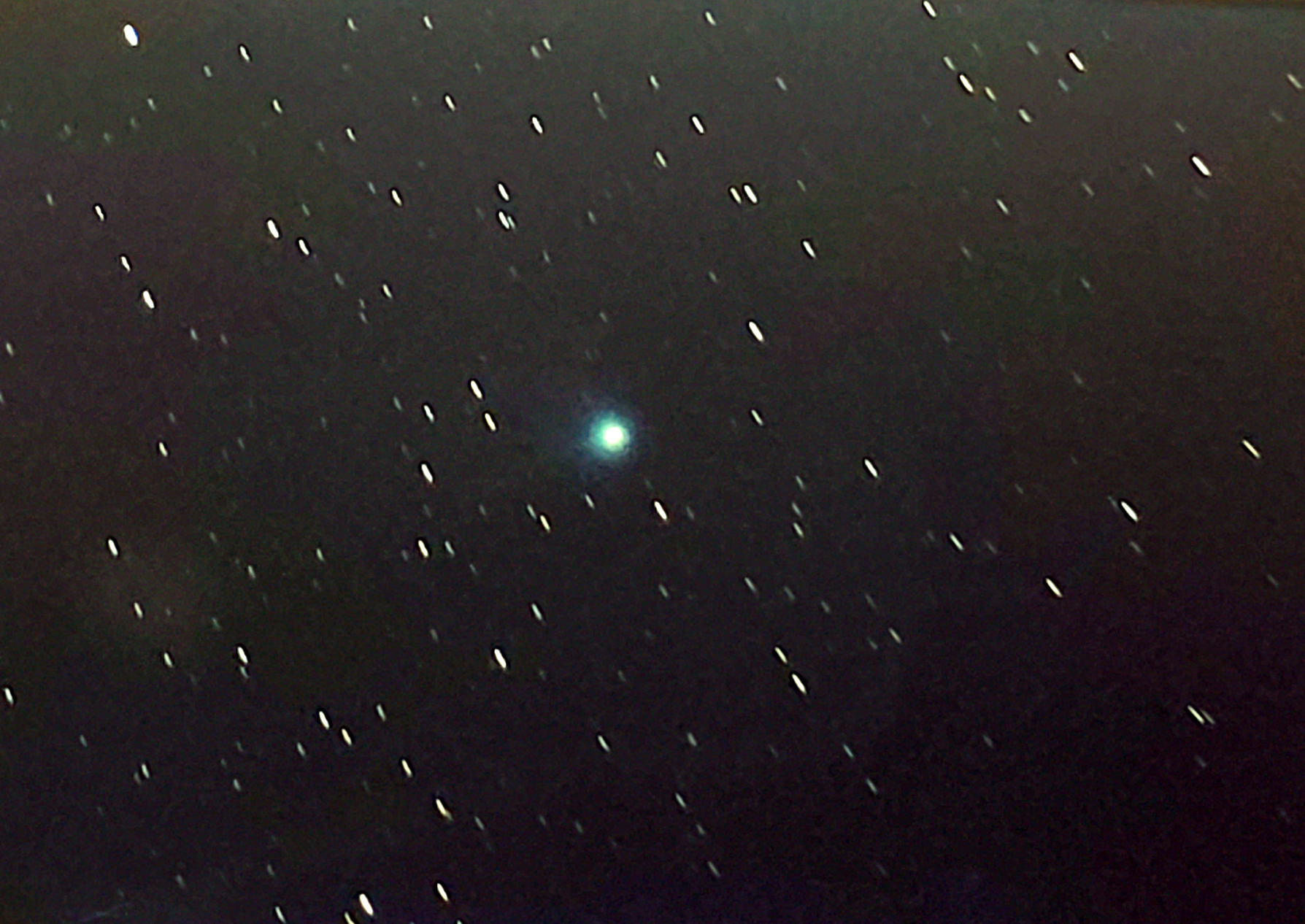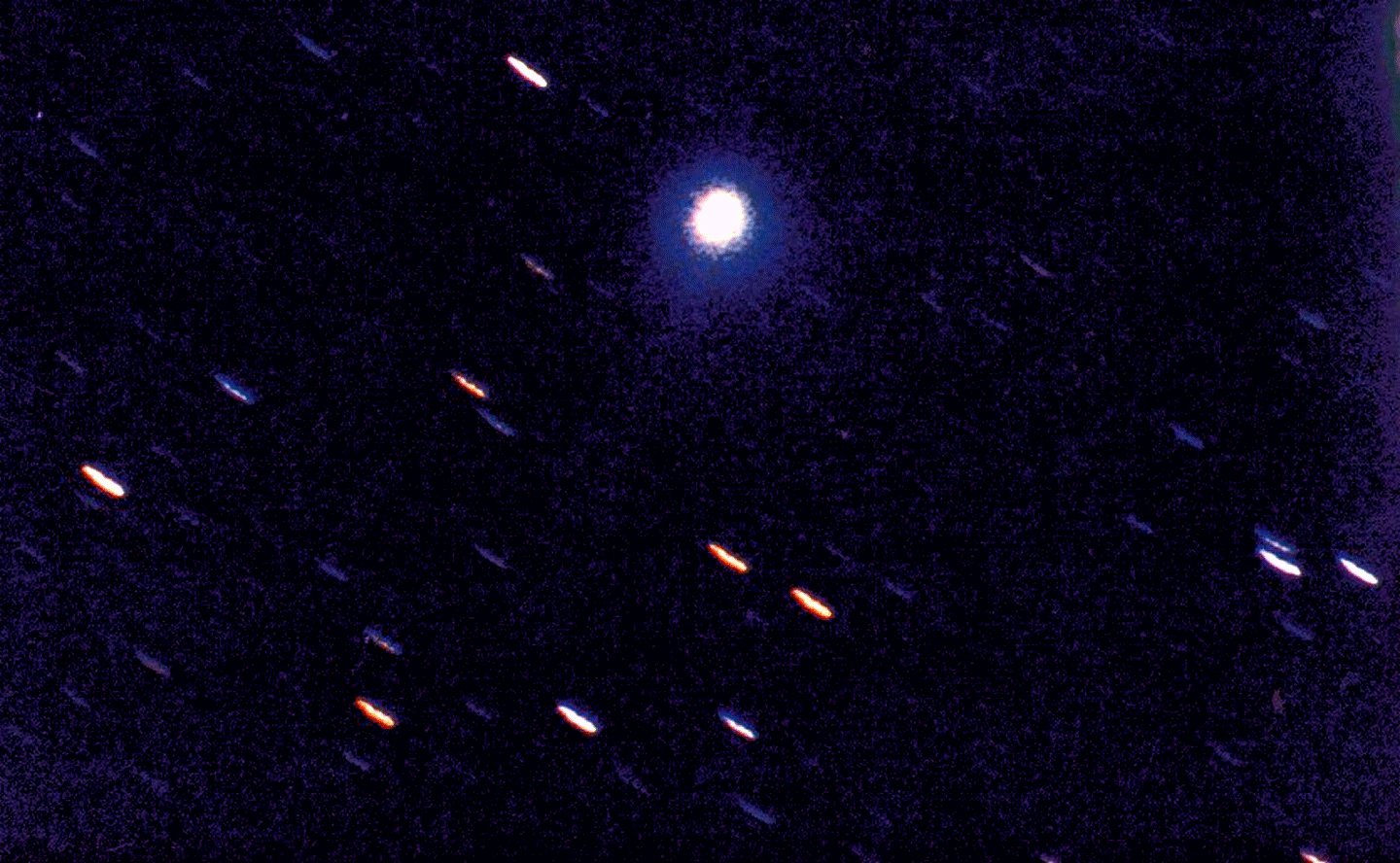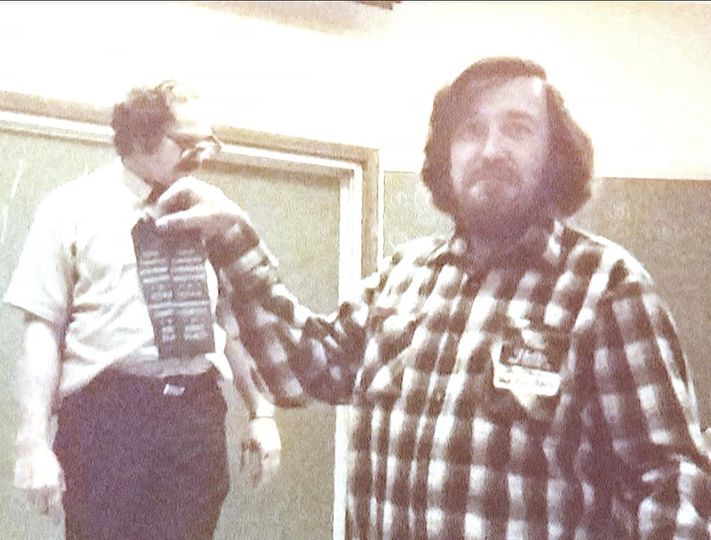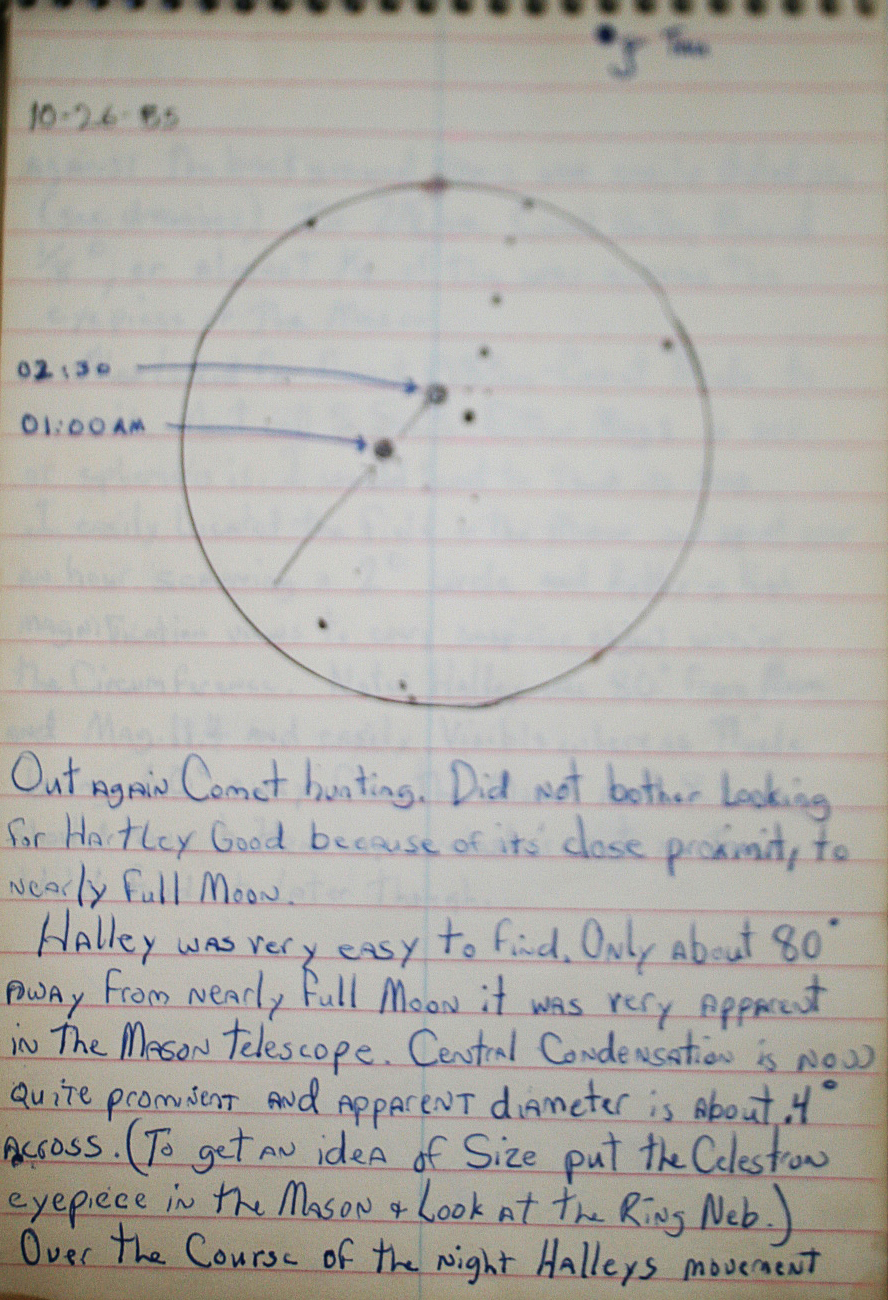
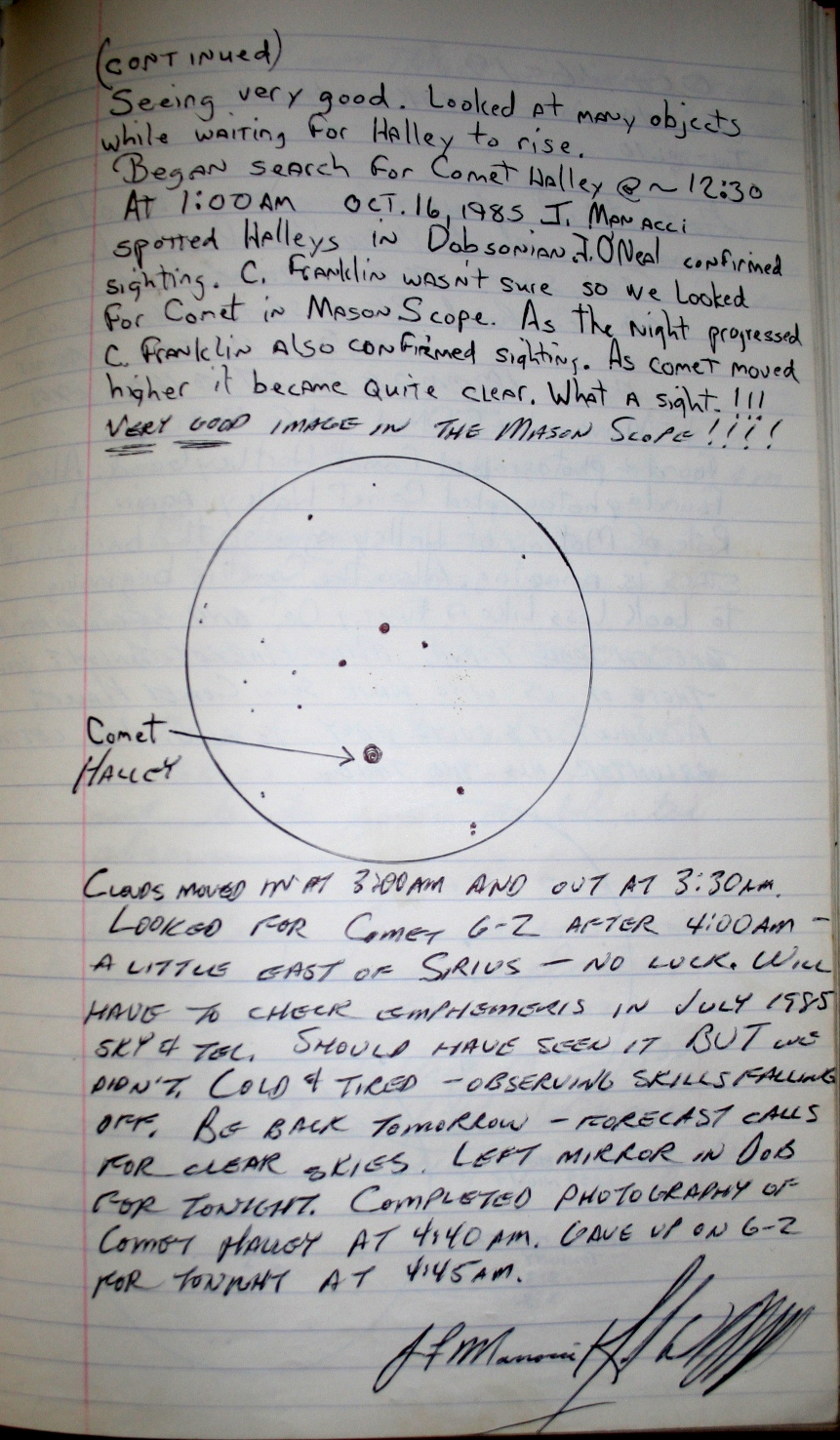
Here's a couple of shots of Mike Harkey and I out looking for the comets in the depths of winter in 1985.
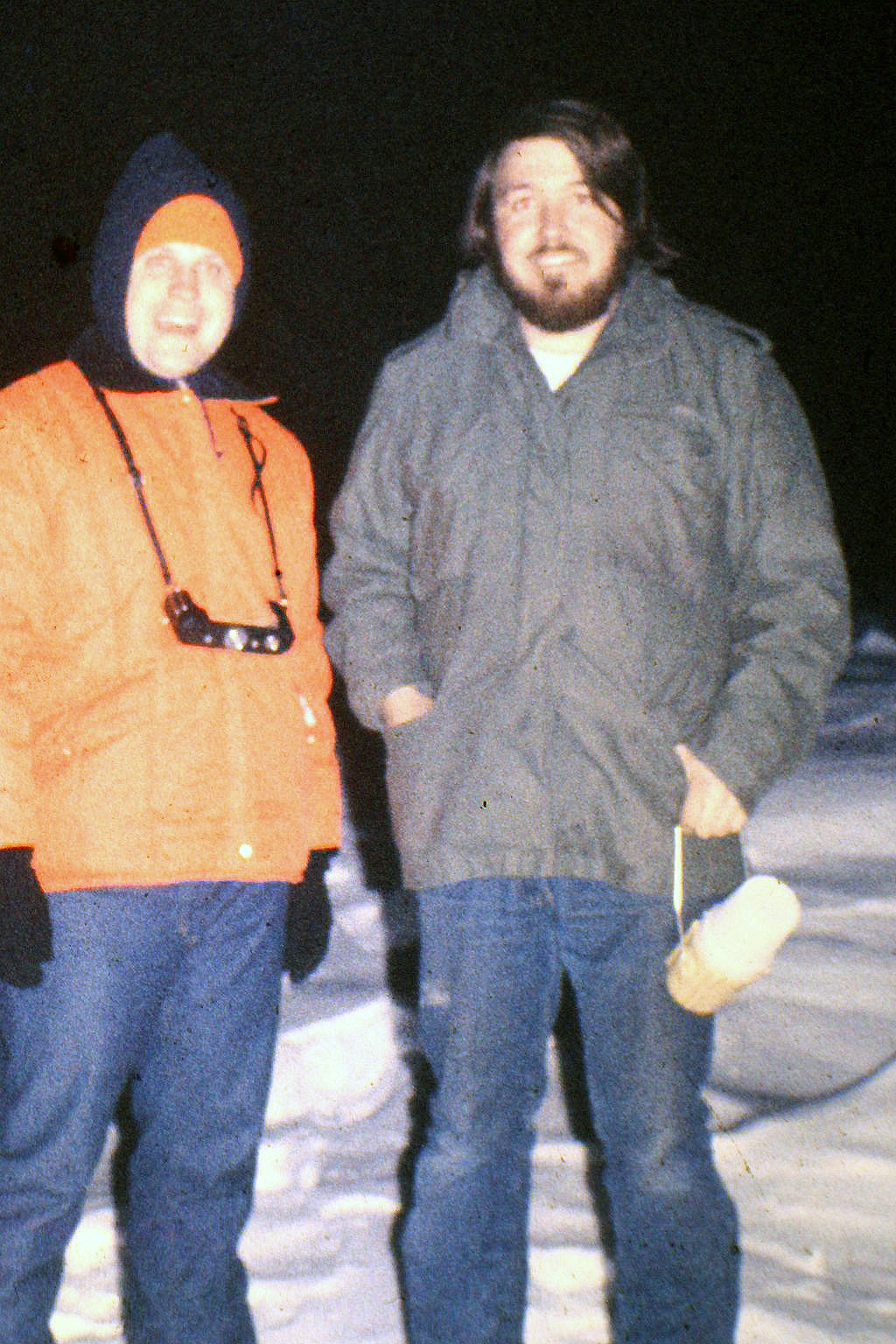
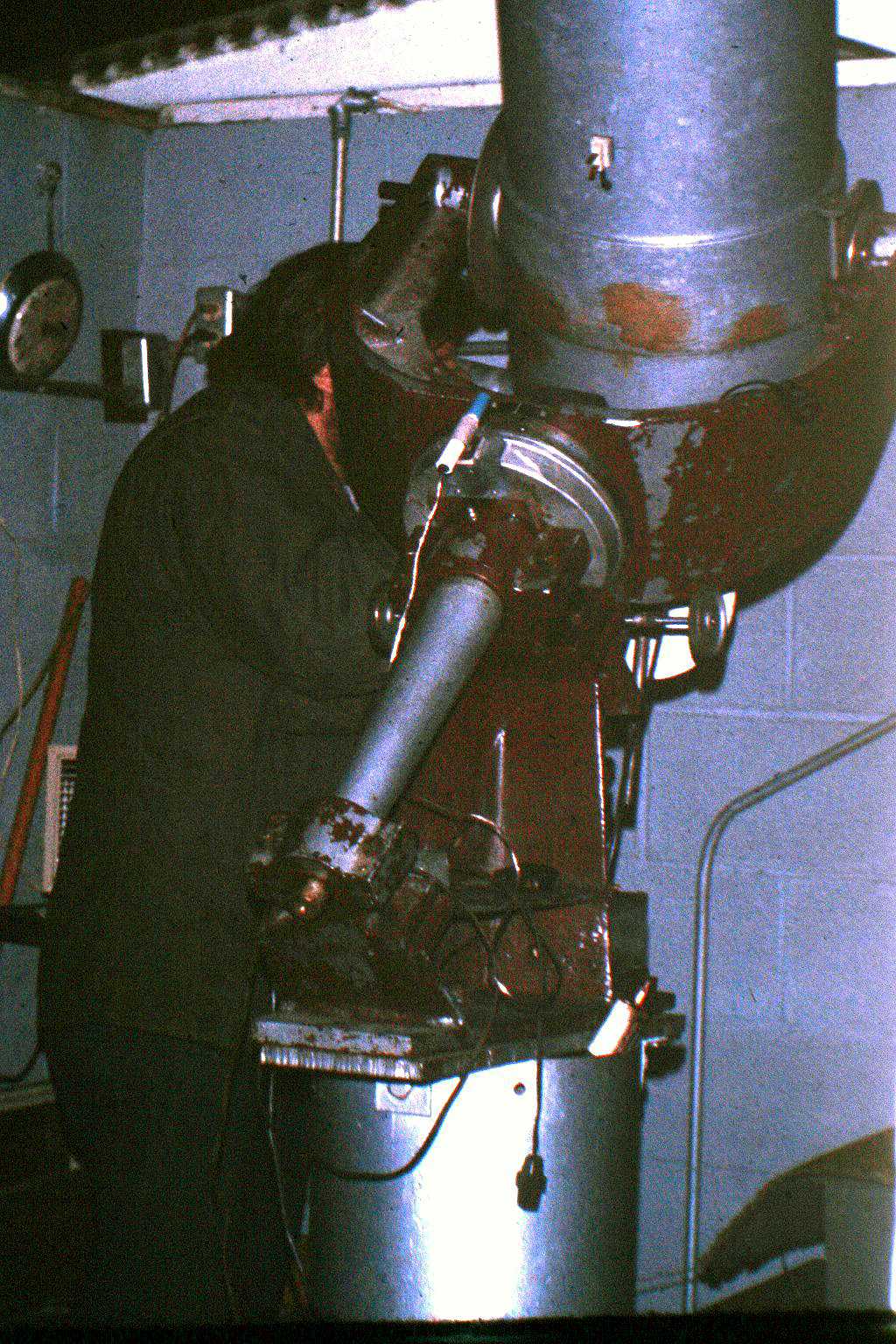
Halley's Comet or Comet Halley, officially designated 1P/Halley, is a short-period comet visible from Earth every 75–79 years.
Halley last appeared in the inner parts of the Solar System in 1986 and will next appear in mid-2061.
Halley's periodic returns to the inner Solar System have been observed and recorded by astronomers around the world since at least 240 BC.
But it was not until 1705 that the English astronomer Edmond Halleyunderstood that these appearances were reappearances of the same comet.
As a result of this discovery, the comet is named after Halley.
During its 1986 visit to the inner Solar System, Halley's Comet became the first comet to be observed in detail by spacecraft,
providing the first observational data on the structure of a comet nucleus and the mechanism of coma and tail formation.
These observations supported a number of longstanding hypotheses about comet construction,
particularly Fred Whipple's "dirty snowball" model, which correctly predicted that Halley would be composed of a mixture of volatile ices—such as water, carbon dioxide, ammonia, and dust.
The
missions also provided data that substantially reformed and
reconfigured these ideas; for instance, it is now understood that the
surface of Halley is largely composed of dusty, non-volatile materials,
and that only a small portion of it is icy.
My story with
Hallets began back in the summer of 1985 when Joe Mannacci, Randy
Beachler, Mike Harkey and myself began looking for Comet Halley.
We
eventually found it, We shot multiple exposures (slides) and then
placed the slides into two slide projectors placed side by side and we
slid a piece of cardboard back & forth to replicate a simple form
of Blink Comparator.
anything that moved as the images blinked back
& forth. I have the images, but cannot locate them right now. When
I do I will update this page with our "discovery" images.
Below are some logbook entries .




